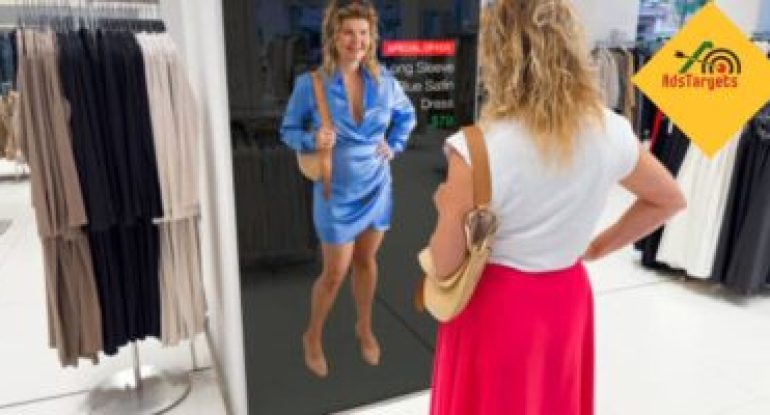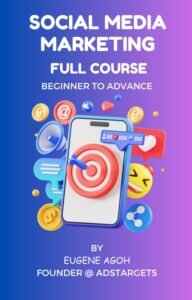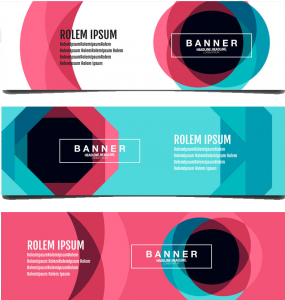Fashion is all about trends—what’s hot today might be old news tomorrow. But one thing that’s not fading anytime soon is augmented reality advertising. Just like how fashion brands constantly reinvent styles, AR ads are shaking up the marketing world, bringing a fresh, interactive way to connect with audiences.
With an estimated 1.73 billion AR users by the end of 2024, this isn’t just a passing trend—it’s the future of advertising. Social platforms like Snapchat are already making moves, rolling out sponsored AR filters that let brands level up their marketing. Yet, some businesses are still sleeping on AR, sticking to traditional methods instead of diving into this immersive experience.
That’s why we’ve put together this quick guide—to break down augmented reality advertising, highlight key platforms, showcase killer AR campaigns, and give you a step-by-step plan to launch your own AR ads. Whether you’re a fashion brand looking to let customers “try before they buy” or a business aiming to boost engagement, AR is your ticket to standing out in the digital crowd. Let’s get into it.
Table of Contents
ToggleWhat’s the Deal with Augmented Reality Advertising?

Alright, let’s talk about the future of advertising—augmented reality advertising. If you’re still stuck in the traditional marketing game, you might want to sit up for this because AR is shaking things up in ways old-school ads just can’t match.
So, what exactly is it? Augmented reality advertising is when brands use AR technology to create interactive, hyper-engaging experiences for their audience. Instead of just watching an ad, people actually interact with it—whether it’s trying on a pair of virtual sneakers, seeing how a new sofa would look in their living room, or even playing an interactive AR game that promotes a brand. It blends the digital with the real world, making advertising feel less like an interruption and more like an experience.
Why Should Brands Care?

First off, engagement. Traditional ads? People scroll past them like they don’t exist. But AR ads? They make people stop, explore, and actually enjoy the content. Studies show that AR campaigns boost recall and engagement rates significantly compared to regular ads. In other words, people don’t just see an AR ad—they remember it.
And the best part? Unlike Virtual Reality (VR), which requires special (and often expensive) headsets, AR doesn’t demand any fancy gear. If someone has a smartphone—and let’s be real, who doesn’t?—they can engage with AR content instantly. That’s a huge advantage because it removes barriers to entry.
Now, here’s where it gets even better. With new high-tech releases like the Apple Vision Pro hitting the market, AR is moving beyond just being an accessible tool—it’s also reaching high-end consumers willing to invest in premium, immersive experiences. That means brands can tap into both mass-market audiences and affluent buyers who crave next-level digital interactions.
Real Talk: The Future is AR
Fashion brands are already letting customers “try before they buy” using AR. Beauty companies? They’re using AR filters so users can test makeup shades in real-time. Even car manufacturers are jumping in, letting potential buyers take a 360-degree look at a car’s features from their phones.
It’s not just a trend—it’s the next big shift in digital marketing. If your brand isn’t thinking about AR advertising yet, it’s time to get in the game. Because let’s be honest, the future belongs to brands that aren’t afraid to innovate, engage, and create experiences that people actually enjoy.
What are Some Great Examples of AR Advertising?

#1. Coca-Cola Zero Sugar’s #TakeATasteNow – A Next-Level AR Experience
Back in autumn 2023, Coca-Cola went all out with #TakeATasteNow, a bold and interactive augmented reality advertising campaign in partnership with Tesco Group. This wasn’t just another billboard ad—it was a full-blown digital out-of-home (DOOH) and AR experience designed to get people hyped about Coke Zero.
A Nationwide Rollout with a Twist
The campaign took over 13 major locations across the UK, from London and Manchester to Cardiff and Bristol, making sure Coke Zero lovers (and soon-to-be fans) had plenty of chances to dive into the action. It ran from September 25th to October 15th, giving people a few solid weeks to engage with the AR-powered billboards in high-traffic areas, including popular shopping centers like Lakeside and Bluewater.
How It Worked – More Than Just a Billboard
This wasn’t just about flashy screens—it was an interactive, real-time AR experience. Here’s how it played out:
🔴 Users could control and change the AR visuals on the screens just by using their smartphones. Imagine walking past a Coca-Cola ad and actually interacting with it instead of just watching.
🔴 By scanning a QR code, users instantly received a digital Coke Zero bottle on their phones plus a voucher to claim an actual bottle at a nearby Tesco. No boring free sample booths—this was a seamless blend of digital engagement and real-world rewards.
🔴 The campaign made grabbing a free Coke Zero way more exciting than just getting one from a random street promoter. The mix of augmented reality advertising and DOOH made the experience fresh, fun, and unforgettable.
Coca-Cola Didn’t Stop There—They Took It to Social Media
To take things up a notch, Coca-Cola teamed up with six major influencers on Instagram. These creators dropped short, engaging videos featuring a Coke Zero “security can”—a fun, prank-style concept meant to catch sneaky Coke thieves red-handed. The influencer content added another layer of hype, making the campaign even more shareable and relatable.
What Brands Can Learn from This
This campaign was a masterclass in modern marketing—a mix of augmented reality advertising, digital engagement, and influencer-powered buzz. Instead of sticking to traditional ads, Coca-Cola turned product sampling into an interactive experience that drove real-world action.
The takeaway? Consumers don’t just want to see ads—they want to be part of them. If brands want to break through the noise, they need to think beyond basic promotions and start creating immersive, interactive experiences that actually get people excited.
#2. Marcolin’s Virtual Sunglasses Try-On – AR Advertising Done Right
Gone are the days of guessing whether a pair of shades will actually suit your face. Thanks to augmented reality advertising, trying on sunglasses before buying has never been easier—or cooler. Eyewear giant Marcolin tapped into this game-changing tech with an interactive AR campaign for its Guess brand, teaming up with Teads and AR display ad platform Aryel to make it happen.
How It Worked – See It, Try It, Love It
The campaign was all about letting people virtually try on Guess sunglasses straight from their smartphones. Targeting the 18-34 age group (aka the trendsetters), the campaign featured two killer ad formats:
✅ A 3D interactive ad, where users could check out Guess sunglasses from every angle and try them on using augmented reality advertising—because who doesn’t want to see if their shades game is on point before committing?
✅ A combo ad, starting with a slick promotional video, followed by the 3D product preview and AR try-on feature, letting users experience the sunglasses firsthand.
Rolling Out in Prime Sunglasses Season
Timing was everything. The campaign ran between May and June 2023—aka peak sunglasses shopping months—across five major markets: the US, Italy, Spain, France, and Germany. No matter where you were, if you were scrolling on your phone, Guess made sure you could try before you buy.
The Results? AR Advertising for the Win
This wasn’t just a flashy gimmick—it actually worked.
✅ Users spent an average of 19 seconds engaging with the ad—way more time than they’d usually give a typical banner ad.
✅ The virtual try-on (VTO) feature crushed expectations, performing 44% better than Teads’ usual benchmark. Italy took the lead, hitting a massive 60% above the VTO benchmark—turns out Italians really know their shades.
What Brands Can Learn from This
This campaign proved that augmented reality advertising isn’t just a trend—it’s the future of interactive shopping. Instead of hoping customers would visit a store to try on products, Marcolin brought the store straight to their phones, making the experience personal, fun, and incredibly engaging.
For brands in fashion, beauty, and accessories, this is a blueprint for success: give consumers interactive, try-before-you-buy experiences that make shopping more immersive, more personal, and way more fun.
#3. Circle K & Niantic’s Pokémon Go AR Ad – Gamified Marketing Done Right

Back in 2016, Pokémon Go took the world by storm, putting augmented reality gaming on the map—literally. And while it’s no longer causing mass street takeovers, the game still pulls in a massive crowd, with over 85 million active players every month (yep, it’s still thriving).
The game’s parent company, Niantic, knows exactly how to keep things fresh and, more importantly, how to turn AR into an advertising goldmine. At Cannes Lions International Festival in June 2023, Niantic unveiled a slick new Rewarded AR ad format—essentially, interactive augmented reality advertising baked right into the game world.
✅ Circle K Joins the AR Party
One of the first brands to jump on this next-level marketing? Circle K. The US convenience store chain teamed up with Niantic to promote its coffee in a way that felt less like an ad and more like part of the game.
✅ How It Worked: Players spotted a floating Circle K-branded balloon on the Pokémon Go map. Clicking on it opened a sponsored AR experience where they could interact with a 3D Circle K coffee cup—and in return, they scored some sweet in-game rewards.
✅ The Real-World Tie-In: After collecting their rewards, players got hit with a call-to-action, nudging them to head to a nearby Circle K and try the coffee for real. Genius, right?
✅ Did It Work? You Bet.
This wasn’t just some throwaway ad campaign—it actually delivered insane engagement:
✅ 76% average engagement rate—which is wild for any ad campaign.
✅ 95% of players who interacted with the ad fully completed the experience.
That’s the power of augmented reality advertising—it blends digital with reality, making brand interactions fun, immersive, and totally non-disruptive. Instead of forcing an ad on users, this campaign made it part of the experience, and players actually wanted to engage.
✅ Key Takeaways for Brands
This campaign proves that augmented reality advertising is the future—especially for brands looking to reach younger, highly engaged audiences. The key? Make it interactive, make it fun, and make it worth their time.
For brands that want to tap into the power of AR marketing, gamification, rewarded experiences, and real-world incentives are the way to go. Because if your audience is actively playing, why not let them play with your brand too?
#4. Christian Dior Parfums’ AR Beauty Try-On – A Game-Changer for Beauty Ads

When it comes to luxury beauty, Christian Dior Parfums isn’t afraid to push boundaries. For Eid 2023, they dropped a seriously cool augmented reality advertising campaign to advertise their Dior Addict Lipstick—and let’s just say it was a total game-changer.
Now, we all know that Eid is a big deal when it comes to beauty shopping—people are all about fresh makeup looks to complement their celebrations. In fact, Google’s internal data showed that searches for beauty products during this time spiked by 35%. So, Dior capitalized on that hype with a super interactive AR experience to make sure their lipstick was on everyone’s radar.
✅ The AR Magic
In partnership with Google and Spark Foundry, Dior took their ads to the next level by integrating augmented reality (AR) into their Video Action Campaign. The ad would pop up with a panel showcasing lipstick shades on models of different skin tones, and then it invited users to “try it on” using their smartphone camera’s selfie mode.
Imagine that: you’re scrolling through YouTube, and suddenly, boom—you’re trying on Dior Addict Lipstick without leaving your couch. Just like that, augmented reality advertising turned a regular beauty ad into a personalized experience.
But wait—there’s more! The video ads weren’t just fun to play with—they were shoppable. Users could tap a “shop now” button that would send them directly to the Dior website to grab their new lipstick. Talk about conversion gold.
✅ AR’s Impact
This AR campaign didn’t just sound good—it worked. It ran across the Gulf countries, including Saudi Arabia, UAE, Kuwait, and Qatar, reaching over 4 million people in just 21 days.
Here are the mind-blowing numbers:
#1. 41% of viewers interacted with the Beauty Try-On panel.
#2. People used the AR to try on different shades more than 400,000 times.
#3. Over 2,000 mobile screenshots were taken as users snapped pics of their new look.
So yeah, Dior really knew how to tap into the power of augmented reality advertising to get their audience excited and engaged.
✅ What’s Next for Dior?
Dior is already looking ahead to future campaigns, and Felipa Monteiro, the brand’s marketing lead, said they’re ready to activate this tech again while keeping an eye out for even more interactive marketing solutions.
For other brands thinking about stepping into the AR game, this campaign is a blueprint. It shows how AR try-ons can make your ads interactive, engaging, and most importantly—effective. When you make your ads a personal experience for users, you create a whole new level of connection.
#5. Warner Bros & Snapchat’s Barbie AR Activations – The Ultimate Pink Reality
In the summer of 2023, Barbie wasn’t just a movie—it was a cultural phenomenon. And if you thought the Barbie marketing hype was already over-the-top, think again. Warner Bros. and Snapchat teamed up to create some seriously fun augmented reality advertising that got everyone talking.
It all started in June when the film was just about to hit the big screen. To get everyone into the Barbie spirit, they dropped a Barbie Wardrobe AR lens on Snapchat. Users could try on all kinds of iconic Barbie outfits, like the classic pink and white cowgirl look, complete with a white Stetson hat. Imagine scrolling through your Snap and suddenly you’re rocking Barbie’s fabulous wardrobe—it was a straight-up fashion fantasy come to life.
But hold up, the fun didn’t stop there! Once the film dropped and everyone was obsessed with it, they took the augmented reality advertising to the next level. Snapchat users could now scan famous global landmarks like the Eiffel Tower, Sydney Harbour Bridge, and London’s Tower Bridge, and watch as those iconic spots transformed into bright pink, pastel-colored versions of themselves. Think of it as the world tour of Barbie-fied landmarks—totally Insta-worthy and seriously eye-catching!
This was more than just another gimmick. By tapping into augmented reality advertising, Warner Bros. gave fans a whole new way to engage with the Barbie brand, making the experience fun, interactive, and personal. Snapchat users got to live the Barbie dream, all while promoting the film in a way that felt exciting and fresh.
It’s a genius move showing how AR activations can boost engagement and make an ad campaign unforgettable. After all, who wouldn’t want to live in a world of pink, fashion, and fun? And thanks to Snapchat’s AR magic, Barbie’s charm hit the streets and screens in ways we’d never seen before.
#6. Maybelline New York – The World’s Biggest AR Mirror (Yes, You Read That Right!)
On October 11th, 2023, Maybelline New York took augmented reality advertising to a whole new level with the launch of the world’s largest AR mirror. Picture this: a 43,000 square-foot mirror (that’s a whopping 4,000 m²) slapped on the side of Gulliver Mall in Kyiv, Ukraine. Talk about making a statement, right? This massive AR mirror wasn’t just for show—it was all about showcasing their Falsies Surreal mascara in the most epic way possible.
For one whole day, mall-goers had the chance to interact with the giant mirror. Here’s how it worked: visitors could step up to a kiosk under the screen and try on the mascara virtually—and then instantly see their new look on the huge AR mirror hanging above them. Totally mind-blowing, right? It’s like the future of beauty shopping collided with a massive digital billboard.
The numbers were straight-up insane. Maybelline New York saw 3 million organic views and mentions. And those stats were just from the first activation—more data was still being collected at the time. Looks like this augmented reality advertising stunt was a huge hit, and the brand was definitely on to something major.
But that’s not all. In February 2024, Maybelline and Ffface.me brought the AR magic back with a Valentine’s Day-themed activation. Visitors could pose for the ultimate couple selfie (or solo if you’re just out there living your best life), send messages to their loved ones, and see those messages pop up on the mirror in real-time. Romantic and techy? Yes, please!
Polina Click, the COO of Ffface.me, pointed out how people are becoming immune to regular advertising. You know, the whole “banner blindness” thing? Well, it turns out the same applies to offline ads, and that’s why they’re pushing for interactive AR experiences. Why settle for a boring billboard when you can interact with something that actually excites people?
This augmented reality advertising campaign not only drove insane engagement but also proved that immersive, interactive experiences are the future of advertising. And let’s be real—who wouldn’t want to check out their new mascara on the world’s largest AR mirror? Next-level marketing? Absolutely.
#7. Revolut’s ‘Unlockable’ Ultra AR Activation – Where Tech Meets Exclusivity
In June 2023, Revolut dropped its new membership plan, Ultra, with a seriously cool augmented reality advertising activation that turned heads across several major European cities. We’re talking about shiny, mysterious Platinum Portals popping up in places like Covent Garden, London, just waiting to be explored.
So, here’s how it went down: all passers-by had to do was scan a QR code at the base of the portal to unlock an exclusive AR experience showcasing Revolut’s sleek, metal Ultra card. If that doesn’t scream luxury banking, we don’t know what does.
But wait, it gets even better. Revolut encouraged people to share their AR experience on Instagram, using an Ultra filter and tagging @revolutapp for a chance to win a free year of Ultra membership. Talk about a win-win.
In their case study, Apexl Studios (the masterminds behind the tech) mentioned that Revolut wasn’t just launching a new banking plan—they were creating a memorable moment. The aim was to combine cutting-edge augmented reality advertising with social media buzz to make the Ultra plan feel like the VIP experience it truly is.
By blending immersive tech with some serious social media engagement, Revolut wasn’t just selling a product; they were making waves in the banking world by standing out from all the traditional banking noise. And honestly, can you blame them? Who wouldn’t want to unlock some exclusive AR magic while feeling like a VIP?
#8. Snap’s ‘Wait’ll You See This’ Campaign – The AR Revolution Continues
If you’re all about augmented reality advertising, then Snapchat has been leading the charge for years. Seriously, while other social media platforms are finally jumping on the AR bandwagon, Snapchat’s been killing it from the start. So, what better way for them to show off their AR skills than with—well—more AR, right?
In January 2023, Snap launched its own campaign, ‘Wait’ll You See This’, and trust us, it was a trip. The 60-second ad was full of wild, wacky transformations—like people’s heads turning into horses or dogs, and subway floors turning into baked beans. Yup, you read that right.
But here’s the kicker: the ad was more than just a promo. It was an AR activation! Every frame of the commercial was scannable with Snapchat’s camera, taking users straight to the AR lenses featured in the ad. Plus, there was some limited-edition merch tossed in for good measure. It aired during the NFL AFC Championship game, hitting 55 million viewers, according to The Hollywood Reporter.
Snap’s creative officer, Colleen DeCourcy, told Fast Company that this wasn’t just a one-off thing. Nope, it’s all part of an ongoing brand platform designed to show off what Snapchat’s AR can really do—and give people a peek into one of the most dynamic (yet least understood) social networks.
If you missed it, don’t sweat it. Snapchat’s not slowing down anytime soon with their augmented reality advertising—they’re just getting started.
#9. Malfy Gin’s ‘Escape to a Malfy World’ – A Sip of Italy in AR
If you’re a fan of gin and you’ve got a taste for adventure, Malfy Gin just took things to a whole new level with their augmented reality advertising. The premium Italian gin brand created an AR experience that let you escape straight to the sunny, beautiful Amalfi Coast in Italy—without even leaving your home.
Here’s how it went down: You could activate the immersive, 360-degree experience by scanning a QR code on one of 300,000 bottles (yeah, you read that right) or spotting it on OOH ads and point-of-sale sites. Or, if you’re more of a social media person, just follow a link on a post. The campaign was aimed at people aged 25-40 who are into travel, style, and, well, living that finer life.
Once you’re in the AR world, you get to pick your own adventure, exploring different settings that showcase Malfy’s botanicals. But it doesn’t stop there—at the end, you can snap a selfie and keep your very own ‘Malfy Moment’ to share with friends. It’s like a mini-vacation in your pocket, all thanks to augmented reality advertising.
Oh, and here’s the cherry on top: The campaign was shortlisted for the 2024 Campaign Experience Awards in the Virtual Experience B2C category. Looks like Malfy Gin is setting the bar high when it comes to blending premium gin and next-level tech.
#10. Toyota’s AR Vehicle Visualization and Virtual Test Drive – Test-Drive Your Dream Ride from Your Couch
Toyota really knows how to drive innovation, especially when it comes to augmented reality advertising. To kick off the 2023 Toyota Crown launch, the automaker teamed up with Yahoo Advertising to create an insanely cool AR experience. 🚗✨
Using augmented reality, you could pop the Toyota Crown into your driveway or garage (yep, it’s like the car is actually there), take a 360-degree stroll around it, and even hop in the driver’s seat. Not only that, but you could go on a virtual test drive without ever leaving your couch. Talk about next-level convenience!
The AR experience was packed with all sorts of features, letting you explore different colors and dive into all the juicy details about the car. And it wasn’t just about showing off—Toyota and Yahoo used the AR experience to gather info on what colors and features were catching people’s eyes. It’s smart, right?
To make it even more accessible, Toyota used DOOH ads (those big, scannable billboards) and banner displays. Plus, they even brought connected TV (CTV) into the mix to make sure people could access the experience wherever they were.
With more and more car brands turning to augmented reality advertising to give consumers a taste of the future without having to step foot in a showroom, Toyota’s Crown launch is just one more example of how AR is shifting the way we shop for cars. Whether it’s during COVID lockdowns or beyond, AR’s got us covered.
#11. Vodafone’s ‘Elf and Seek’ AR Game – A Festive Hunt for Prizes
Vodafone brought the holiday fun back with its ‘Elf and Seek’ AR game for Christmas 2023, and trust me, it was as epic as it sounds. For the second year running, Vodafone made augmented reality advertising even more exciting by turning the whole thing into a treasure hunt.
Here’s how it worked: players used their phones to catch digital elves scattered around the real world. Every elf caught was a chance to rack up rewards through Vodafone’s VeryMe program. The best part? Players could score prizes by simply interacting with outdoor ads, social media posts, and even custom cinema spots at Pearl & Dean Cinemas.
And Vodafone didn’t stop there – DOOH screens (that’s digital out-of-home advertising) brought the AR magic to places like London Westfield, Media Wall in Liverpool, and The Screen in Nottingham. Imagine walking past a giant billboard, scanning it, and suddenly having more chances to catch elves and win even more cool stuff.
Last year, the Elf and Seek craze was wild, with over 245,000 people playing and capturing a total of 270,000 elves. People didn’t just get to flex their elf-catching skills, they also scored up to 20,000 prizes.
By bringing this augmented reality advertising experience into real-world locations, Vodafone really made sure to keep the festive spirit alive while giving us all a fun way to score big. So, if you didn’t catch any elves this year, you know what you missed.
#12. L’Oréal Garnier’s ‘Vitaverse’ AR Experience – A Virtual Spa Adventure
In May 2023, L’Oréal Garnier launched a seriously cool augmented reality advertising campaign that took skincare to the next level. The brand introduced its first-ever Instagram AR filter to promote the Vitamin C Glow Boost Night Serum across the Nordics (Denmark, Finland, Sweden, and Norway). Talk about skincare meets tech!
Here’s how it worked: when users activated the Instagram filter through the @garniernordics account, they were transported into a dreamy virtual world called the ‘Vitaverse’. Picture this: a futuristic spa vibe with floating orbs, calming tunes, and the serum chilling at the center. The coolest part? You could literally walk into the space and switch it from day to night, mimicking the two versions of the serum.
Influencers in the region jumped on the AR bandwagon, showing off the benefits of the serum while encouraging their followers to dive into the Vitaverse for themselves.
Linda Ghabain, the Nordic social brand manager at Garnier Nordics, said the campaign was a major shift in their marketing approach, aiming to really highlight the serum’s benefits—virtually. With this augmented reality advertising experience, Garnier created a fully immersive way for users to interact with their product before even trying it out in person. Talk about next-level skincare marketing
#13. Warner Bros’ ‘Dune: Part Two’ Snapchat Lens – Ride the Sandworm!

Ahead of the much-anticipated release of Dune: Part Two, Warner Bros. teamed up with Snapchat for an augmented reality advertising campaign that totally transported users to the desert planet of Arrakis. They launched a Snapchat Lens that let fans turn themselves into Fremen (the iconic desert dwellers from Dune) and hop on a giant sandworm for a wild AR ride. Talk about a desert adventure you can’t miss!
But that’s not all – they also dropped some awesome Dune-themed Cameo Stickers. These animated stickers let Snapchatters customize their posts with Dune vibes, bringing their favorite characters or moments to life in their snaps. Cool, right?
The whole thing was backed up with video ads that let users tap through and head straight to a microsite to grab tickets for the movie. The campaign first hit the US and Canada, but keep an eye out, because it’s expanding globally by the end of February 2024.
By using augmented reality advertising, Warner Bros. made sure Dune: Part Two fans could dive into the action before they even stepped foot in the theater. It’s AR that literally takes you to a new world.
#14. William Hill Vegas’ AR Slot Machines – Spin to Win a Vegas Trip.
Gambling brand William Hill Vegas teamed up with Wavemaker UK for a seriously cool augmented reality advertising campaign that made slot machines come to life right in front of you! They set up 23 interactive OOH screens across 12 UK cities, and all you had to do was scan a QR code to get in on the action.
Once you scanned the code, you’d get a digital token that lets you spin an AR slot machine straight from your phone (no download required – pretty smooth, right?). And as you played, the OOH screen would light up and show your interaction, letting you enter into a prize draw. The grand prize? A £15,000 trip to Las Vegas. Talk about a jackpot!
But wait, there’s more – if you downloaded the William Hill app, you’d get an extra chance to win.
Melanie Blood, Head of Project Management at Ocean Labs (the team behind the OOH screens), said, “This campaign is next-level – combining large-scale out-of-home advertising with augmented reality for a slot machine experience that’s never been done before. It’s super engaging and perfectly targets the audience in a way that’s both fun and memorable.”
With this augmented reality advertising, William Hill didn’t just bring a game to life – they brought the thrill of Vegas right to the streets.
#15. Pizza Hut –PAC-MAN AR
In 2021, Pizza Hut pulled off one of the most epic augmented reality advertising campaigns ever, merging classic nostalgia with state-of-the-art tech in a way that no one expected. Partnering with creative studio Tool and the ad agency GSD&M, they turned an everyday pizza box into an interactive game console. Yeah, you heard right—a pizza box. They didn’t just stop at selling pizza; they gave their customers a slice of the past and the future all at once.
Here’s the cool part: thanks to the WebAR platform 8th Wall (owned by Niantic, the same folks behind Pokémon GO), customers who picked up one of these special Pizza Hut boxes could scan it with their smartphones. Instantly, PAC-MAN came to life on their phone screens in augmented reality, floating right above the box. All you had to do was open your browser, and boom—instant gaming experience right in front of you, no app required. It was like playing PAC-MAN in real life, but with a modern twist.
The augmented reality advertising didn’t just make waves with tech geeks—it hit hard with the general public. This wasn’t just a fun gimmick; it was a full-on, nostalgia-fueled experience. Paired with a Superbowl ad, this campaign caught fire, racking up a mind-blowing 741 million impressions. And get this—Pizza Hut sold 10.6 million of these special PAC-MAN pizza boxes. Talk about a marketing win! The campaign wasn’t just viral on social media; it also picked up major media coverage, with shout-outs from big names like Hypebeast, designboom, and Food & Wine.
To top it off, it wasn’t just about selling pizza or selling nostalgia—it was about giving people an unforgettable experience. Pizza Hut’s augmented reality advertising didn’t just make people want to buy pizza; it made them want to engage with the brand in a whole new way, turning an everyday purchase into an interactive, memorable event. And that’s exactly how you do modern advertising right.
#16. Dune: Part Two
For the release of Dune: Part Two in 2024, Warner Bros took a pretty chill yet super creative approach to augmented reality advertising. Instead of going all-out with high-tech gimmicks, they kept it simple and fun by launching a special Dune Lens for Snapchat. This lens let users transform into a sandworm-riding Fremen—the iconic desert warriors from the Dune universe. Imagine cruising through the digital dunes, looking like a boss, all thanks to a snap on your phone.
The magic didn’t stop there. Along with the lens, they threw in custom Cameo stickers and paired it with video ads promoting the movie. Snapchat users could tap on the ads and buy tickets right from a microsite, making it super easy to lock in their spot for the film. It was a smooth integration of augmented reality advertising, where the fun, interactive filter was the star, but it also served as a killer tool to boost ticket sales.
What made this campaign stand out wasn’t just the cool factor of becoming a sandworm-riding warrior. It was the simple, user-driven engagement that encouraged people to get creative and share their AR experiences. Warner Bros was able to spark some solid user-generated content, all while guiding people to purchase tickets in the process. This augmented reality advertising hit all the right notes—engaging, fun, and effective at getting people to hit that buy button.
#17. Red Bull
Red Bull is no stranger to pushing the limits with wild stunts and extreme sports, but let’s face it—unless you’re there in person, you might miss out on the full experience. So, to bring their World Series Cliff Diving event to the masses, they teamed up with AR agency Rock Paper Reality to do something truly epic. The result? A jaw-dropping augmented reality advertising campaign that lets you feel the thrill of a 70ft dive—all from the comfort of your phone.
Thanks to the WebAR experience built on the 8th Wall platform, all you had to do was scan a QR code, and boom, you’re watching an extreme cliff dive right in front of your eyes. No need to actually be at the event to get a taste of that heart-pounding action. It was like having the entire cliff diving experience right at your fingertips, and honestly, it was pretty mind-blowing.
This augmented reality advertising campaign wasn’t just about showing off Red Bull’s adrenaline-packed event—it was about bringing that excitement directly to fans who couldn’t make it. It gave them a way to feel like they were part of the action, no matter where they were. Talk about a cool way to make an unforgettable impression.
#18. Burger King
In 2019, Burger King Brazil pulled off one of the boldest and most creative augmented reality advertising campaigns ever. The idea? Set a McDonald’s ad on fire and score yourself a free Whopper. Sounds wild, right? But that’s exactly what they did, and it worked like a charm. The brains behind this campaign were the creative minds at David Sao Paolo, who had a couple of problems to solve. First, McDonald’s was outspending them big-time on paid media—like, four times as much. Second, they weren’t seeing the kind of action they wanted on their app when it came to in-app purchases. So, they came up with a genius solution: why not use McDonald’s ads to their advantage?
Here’s how it went down: the team at David agency went all in, collecting every possible McDonald’s ad they could find—billboards, digital ads, social media banners, even those little tray papers—and created a massive database with all that content. When users spotted any McDonald’s ad in real life and filmed it, the Burger King AR experience would kick in. Flames would literally burn away the McDonald’s ad, revealing a free Whopper coupon. The catch? It led you straight to the Burger King app to claim your prize.
This augmented reality advertising was a masterstroke—leveraging the competition’s own ads to drive app engagement and sales, all while getting people pumped up over a free burger. It was a win-win: they got to outsmart the competition and boost their own app usage at the same time. Talk about turning up the heat
#19. Ikea-Place App
“Try before you buy” has been one of the most obvious and useful ways to use AR for a while now, and Ikea totally nailed it with their Place app, released back in 2017. The app solved a common problem everyone has when shopping for furniture—trying to figure out how that new couch or coffee table is actually going to look in your space.
With Ikea’s augmented reality advertising and the Place app, you could now see exactly how furniture would fit into your home just by using your phone. You don’t have to guess or rely on imagination anymore; you can literally “place” items virtually in your space to see how they vibe. This not only makes shopping easier for customers, but it also keeps them engaged throughout the buying journey. Plus, it helps Ikea cut down on returns and lost sales because people can make much more informed decisions before hitting that purchase button.
The augmented reality advertising behind this app gave Ikea a real edge over its competitors. Instead of just showing off their products in ads or on their website, they made it super interactive, giving customers a chance to experience the product in their own space first. Smart move, right?
#20. Netflix — Open Anime AR Portal
In 2022, Netflix took anime fandom to the next level with a super cool augmented reality advertising campaign that grabbed everyone’s attention. With anime’s popularity skyrocketing thanks to hits like Attack on Titan and One Piece, Netflix saw the perfect opportunity to dive in with an immersive AR experience. Teaming up with Powster, Hello Tello, and their own Creative Labs, Netflix rolled out some seriously awesome AR portals that let fans step into the world of their favorite anime.
Here’s how it went down: Netflix used 8th Wall’s image tracking tech to create these beautiful, immersive AR portals that you could access by scanning QR codes found on out-of-home ads and social media worldwide. Each portal opened up into a whole new anime-themed adventure, giving fans the chance to explore different anime universes in a super interactive way. Plus, there were microsites tied to each portal, offering even more immersive experiences to get lost in. Want to dive in? Head over to www.openanime.com and see what the hype’s about.
This augmented reality advertising wasn’t just about promoting shows—it was about bringing anime to life in a way that felt fresh, exciting, and totally engaging for the fans. It was an awesome way for Netflix to ride the anime wave while letting users experience the magic of their favorite shows like never before.
Conclusion
In conclusion, augmented reality advertising is proving to be a powerful tool for brands to engage their audience in creative and interactive ways. Whether it’s Pizza Hut bringing PAC-MAN to life on a pizza box or Netflix offering fans a chance to explore anime worlds through AR portals, these campaigns have shown the potential of AR to create immersive experiences that go beyond traditional ads. B
y blending the digital and physical worlds, brands are delivering unique, memorable moments that resonate with consumers. If you’re looking to connect with your audience in a fresh, exciting way, integrating AR into your marketing strategy could be exactly what you need.








